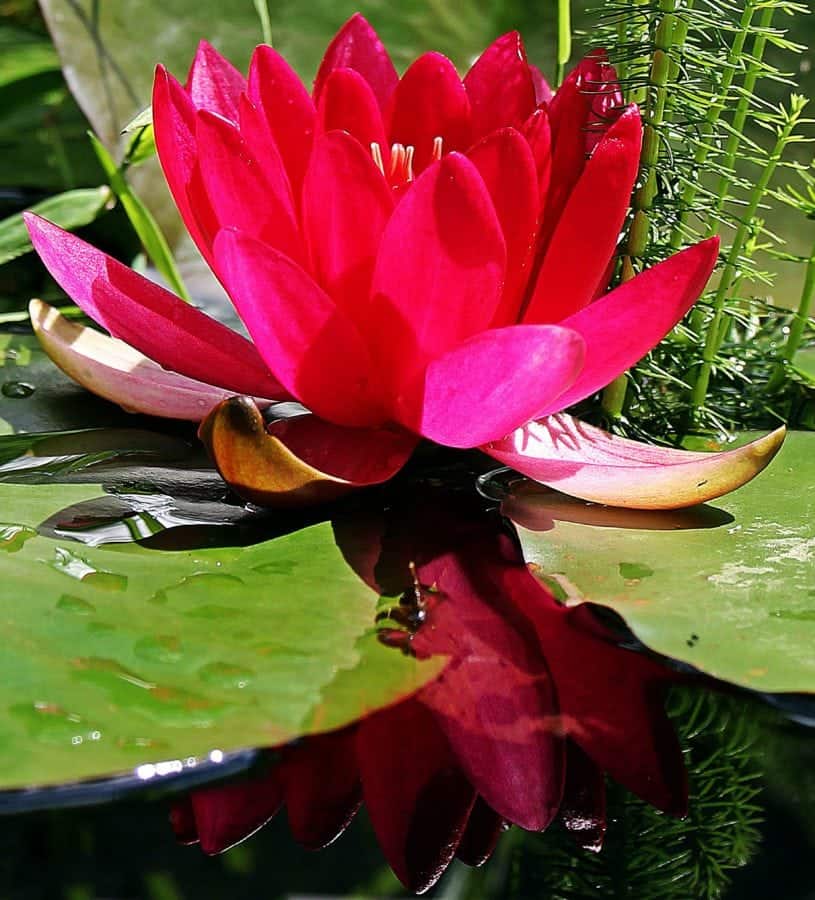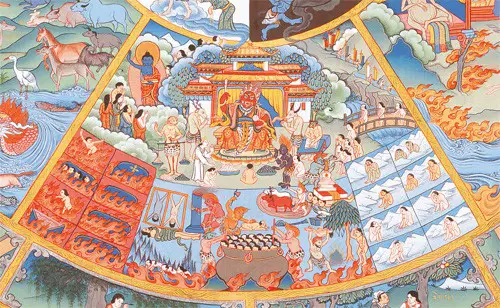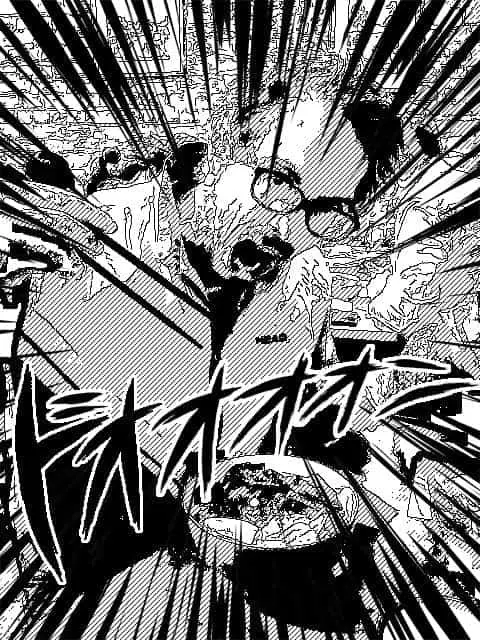Gurenge (Demon Slayer - Kimetsu No Yaiba Opening Song) Translated To English And Explained
鬼滅の刃OP紅蓮華の歌詞を英語に訳して解説
The opening song for Demon Slayer Kimetsu No Yaiba, Gurenge by LiSA, is a power punch of determination, grit, darkness and hope. The song Gurenge has become so iconic that it was even performed by The Tokyo Ska Paradise Orchestra at the closing ceremony of the Tokyo 2020 Olympics.
But what’s the Kimetsu No Yaiba OP all about? How were the Gurenge lyrics written? What does it all mean?
These are the things I want to shed light on today. Let me start by presenting my full translation of the song from the Japanese into English, sung by Cake Sullivan and arranged, just for something different, in a kind of latin feel. Then I’ll try and answer the questions about Gurenge’s meaning below.
鬼 滅の刃の主題歌は紅蓮華という曲ですが 勇気と気合と熱望のパワーパンチのようなものでやや暗い曲と言ってもいいではないでしょうか。
それは何を意味しているのでしょうか?どのように書かれているのでしょうか?それは何でしょう?これらの疑問を、少しでも明らかにしていきたいと思っています。
まず最初に日本語からの翻訳から見ていきます。元の曲を翻訳して編曲してみました。友人のケーキ・サリバンが歌っています。ラテン風のような感じにしました、なんとなく。好き嫌いはあるかもしれませんがこっちの知ったことではありません。
まずは歌を聞いてもらい、それから先ほどの疑問について考えていきましょう。もしこれに気に入ってもらえたらサブスクライブしてください。 ではまた曲の後に。
紅蓮華 元の日本語歌詞
強くなれる理由を知った
僕を連れて進め
泥だらけの走馬灯に酔う
こわばる心
震える手は掴みたいものがある
それだけさ
夜の匂いに (I’ll spend all thirty nights)
空睨んでも (Staring into the sky)
変わっていけるのは自分自身だけ
それだけさ
強くなれる理由を知った
僕を連れて進め
どうしたって!
消せない夢も 止まれない今も
誰かのために強くなれるなら
ありがとう 悲しみよ
世界に打ちのめされて負ける意味を知った
紅蓮の華よ咲き誇れ!
運命を照らして
イナビカリの雑音が耳を刺す
戸惑う心
優しいだけじゃ守れないものがある?
わかってるけど
水面下で絡まる善悪 透けて見える偽善に天罰
(Tell me why, tell me why, tell me why, tell me… I don’t need you!)
逸材の花より
挑み続け咲いた一輪が美しい
乱暴に敷き詰められた
トゲだらけの道も
本気の僕だけに現れるから
乗り越えてみせるよ
簡単に片付けられた
守れなかった夢も
紅蓮の心臓に根を生やし
この血に宿ってる
人知れず儚い
散りゆく結末
無情に破れた
悲鳴の風吹く
誰かの笑う影
誰かの泣き声
誰もが幸せを願ってる
どうしたって!
消せない夢も 止まれない今も
誰かのために強くなれるなら
ありがとう 悲しみよ
世界に打ちのめされて負ける意味を知った
紅蓮の華よ咲き誇れ!
運命を照らして
運命を照らして
Gurenge English Lyric Translation
Now I’ve got a reason to be strong
I’m gonna be right her with you, come on
I know it’s only the play of the light
That shines on the dirt that plays tricks on the mind
And it’s only my shaking hands
That have something theyre tring to grab hold of I swear
It’s no use to glare at the sky
When there’s something about the scent of the night
There’s only one thing you can change
And that’s you yourself, don’t need noone to say it
Now I’ve got a reason to be strong
I’m gonna be right her with you, come on
Cause there are
some dreams that you can’t erase
And theres some times you can’t escape
If I’ve found someone who I want to get strong for
I’m going to say thank you for all the hu-rt
It took the world to beat me down, tell you I’ve my lesson now
Crimson Lotus show me how you flower
Light the way
to my fate
The sound of the lightening strike
Pierces my ears, strikes fear in my heart
I know that kindness is not
Not enough by itself to protect what I’ve got
Under the surface joins good and bad
look close and you can see through it
There comes a punishment
It’s not the bouquet its the flower
Grows all alone that is truly fair
You know the
road buried in thorns and strife
Reveals itself to only my
My sacred heart, now watch me as I
Watch me as I rise
My simply folded hopes and dreams
Which I swore I’d hold close to me
See them blooming in the Crimson Lotus
It’s roots in my blood to my heart
In the end Noone knows
The edge it frays
The wind it blows
Your calls into an air that has gone cold
Theres someone laughing in the shadow
Someone crying don’t you know
Everybody wants the same thing
Cause there are
some dreams that you can’t erase
And theres some times you can’t escape
If I’ve got found someone who I want to get strong for
I’m going to say thank you for all the hu-rt
It took the world to beat me down, tell you I’ve my lesson now
Crimson Lotus show me how you flower
Light the way
to my fate
Demon slayer Kimetsu No Yaiba Gurenge Background
Now, I’m going to assume that if you’re reading this you are aware of the Manga/Anime Demon Slayer Kimetsu No Yaiba. I myself was fairly late to the party hearing about it when the term “鬼滅の刃 Kimetsu no Yaiba” appeared on the list of top 30 new words to appear in the Japanese language in 2020. So, you know, you’ve got to be pretty significant to be considered a “new word in a language”.
You’ll already know that the story is about a young man who sets out on an adventure, or more a voyage of salvation and redemption, to save his possessed sister, and kick a lot of demon arse along the way.
仮に鬼滅の刃を見たことがあるとします。私がこの番組のことを知ったのはかなり遅かったです。2020年の流行語・新語のリストで初めて知りました。「新語」としてリストに載ることは極めて偉大なことであるに違いありません。
概ねの話の粗筋はご存知だと思いますがある少年が帰宅し 自分の家族が全員虐殺された事に気づいて旅に出ることを決意する。贖罪/救済の旅に。

Who wrote Demon Slayer’s opening theme song Gurenge?
The song was composed by two musicians that have had careers closely aligned to the world of Animation Songs, a world so well defined in Japan that it has its own conjugation, “Anison”.
The words were written by the, somewhat prosaic to the Western ear named LiSA, and the music by Kayuko Kusano with LiSA.

では、この主題歌はこの話とどのように関係があるのしょうか。この曲はアニメソング業界と深い関わりを持つ二人のミュージシャンによって作曲されました。日本で言う「アニソン」ですね。歌詞を書いたのはLiSAさんです。西洋人には 「LiSA]という名前はごく普通の名前に感じられると思いますが日本人にとってなんとなくエキゾチックに感じるのではないでしょうか。そして、彼女は草野華余子さんという作曲家と曲作りをしました。
LiSA’s big anime break seems to have somewhat defined her career trajectory, at least in the eyes of the general public, with her going on to work on songs for anime that lethally orbit through other-worlds of reincarnation and ultra-experiential conflict. She continues to be something of a guest of honor at animation related expos around the world.
So where did LiSA come up with the title for the song Gurenge?
Gurenge literally means red lotus flower. The Gu can also be read as “Kurenai”, a word for a deep red color. You may know the character “Kurenai” from such roles as the 紅 from 紅茶, meaning western tea, which we see as black, but the Japanese see as red. Or if you’re an anime fan you might know 紅の豚, the Ghibli film known to the English speaking world as “Porco Rosso” about a pig who not only “might fly”, but did fly an aeroplane to fight with pirates of the sky.
The 蓮 ren, means “Lotus” and the 華 ge means flower.
So literally it is:
紅 Crimson
蓮 Lotus
華 Flower
紅蓮華という題はどこからきたでしょうか?紅蓮華というのは文字通り Red Lotus Flowerの意味しています。つまり「グ」は赤ような、深紅色のような色この字を知っているかもしれません。「紅茶」の紅として良く知られている。洋風のお茶。 西洋では黒いお茶で呼びますが日本では 赤いお茶に見えるようです。
アニメファンなら知っているかもしれませんが、「紅の豚」もある。「クレナイ」は「グ」にもなります。ジブリ映画「ポルコ・ロッソ」

The Role Of The Lotus in Eastern & Buddhist Culture
Now most people interested in Eastern culture will be aware that the lotus is intimately connected with Buddhist culture and philosophy. You often see Buddha, if you see him at all, depicted sitting on his trademark Lotus Throne, looking all together too serene to have a “trademark” anything at all. Probably the main reason that the lotus is such a thing in Buddhism is that it is that the flower is an easily recognisable symbol of transcendence. The Lotus flower grows, almost miraculously, out of the swamps and wetlands to flamboyantly bloom above the water’s surface. It’s the proverbial, “head above the head” that you might hear your guru bang on about from the mount.
And so the term “Gurenge ” brings with it all of these quasi-religious resonances. On it’s simplest level, the Crimson Lotus in the Kimetsu No Yaiba context is a symbol of our protagonist Tanjiro rising above his circumstances, which is, indeed the main thrust of the song, to use a fencing analogy. It’s also worth noticing that Tanjiro’s signature move in Demon Slayer is to bust a “Mizu no Kokyu” “Breath of water-element” type of magic attack on his foes, so a water flower fits in with that too.
そして「れんげ」は蓮の花。
東方哲学とかに詳しい人はご存知かもしれませんが蓮は仏教と深い関わりがあります。蓮の葉の上にブッダがすわっている像をよく見かけます。
これにはいくつかの理由があります。主な理由としては 世俗的なものを超越した象徴になっているからです。蓮を見たことがあれば沼地に生えていることを知っていると思います。根元は 泥の中にありますが水面から伸びて美しい花をみせます。非常に分かりやすいです。世界に存在しながら世界から離れたところに存在する象徴になっています仏教哲学者が話すのを聞いたことがあるかもしれませんが、「頭の上にある頭」とか 「肩の上の空間」とか顔の裏の顔と言った別世界のような概念が出てくることがあります。蓮はそういったところから来ています。
では、なぜ彼女は この「紅蓮華」を使うことにしたのでしょう。
まず蓮の「超越する花」としてのの文字通りの意味があります。
物語では炭治郎が困難を克服しやがて花を咲かせて英雄になる、ということと繋がっています。また、話に出てくる 炭治郎の「水の呼吸」といったような魔法の動き波打つような、水のような敵を倒す技,そのようなものとも繋がりもあると思います。

But why is it a red lotus in Gurenge, and not a green one, or a blue one, or indeed a vermillion, amaranth of gingerline one?
Well, LiSA has also said in interviews that she had in her mind the term “紅蓮地獄” Guren Jigoku, literally Red Lotus Hell.
In buddhism, there is the altogether un-placidity inducing idea of the 8 cold hells, called 八寒地獄 Hakkan Jigoku in Japanese, and which are situated a respectably far enough distance away from the 8 Hot Hells.
Image: Eight Hells
Now, you may think that ending up in one of the cold hells is a step up from the hot hells, but the Cold Hell which the Guren Red Lotus Hell takes its name from is named that way because it is so cold that it causes your skins to peel off and your blood to rush out, making you look like a rather disturbing, but nicely colored, flower.
LiSA has said that it struck her that this was a good metaphor for Tanjiro in Demon Slayer as he sets out on his quest for salvation amidst the carnage and gore of the massacre of his family.
「紅蓮には “紅蓮地獄”っていう紅色の蓮花が咲いたように血が噴き出す地獄を表現した言葉もある。心情を表す比喩表現としてすごくピッタリだなって。」
“The Crimson Lotus is also related to the term “Crimson Lotus Hell”, the hell where people’s blood spouts out from them, like a red lotus in bloom. It just felt like the perfect metaphor for expressing the emotions of the story.”
The Crimson Lotus is the flower that blooms in the very bud of the greatest pain.

しかし、LiSAさんはインタビューで 「紅蓮地獄」というのも関係していると言っていました。”グレン “はあの赤い蓮で 「地獄」はhellです。
仏教には 八寒地獄 と八熱地獄という概念があります。八寒地獄は 熱い方よりはマシと思うかもしれませんが八寒地獄の中にあるものの一つは「紅蓮地獄」と呼ばれている。なぜそう呼ばれるかというと 皮がむいてしまうほど寒いためが出てきて、いたるところに血が噴き上がったりする
気持ち悪いですが、それがまるで紅蓮の花ののように見えてしまうからだそうです。
インタビューでLisaさんは、これは炭治郎の話のいい喩えになると言っていました。彼は 残忍な血まみれの大虐殺により家族をなくしたことを乗り越えて成長していきました。
Gurenge’s Connection To LiSA’s Life
So you can see that the song has many clear references to the show. By all accounts, the lyric writing process was very much an all-in affair, with show producers routinely involved in vetting and vetoing certain words in the lyric writing process.
But LiSA has also described it as a very personal song, written as much in response to the circumstances of her one life as to those of the fictional story she was soundtracking. In interviews, LiSA talks about herself in the third person,
“I feel like I can’t let people down, I can’t give up, I can’t stop. I can’t just stop living, and I can’t die, I can’t give up on being LiSA, I just have to keep going, and that includes an element of something that is frankly very hard. But I still want to continue to blossom.”
It was as if rather than just writing from Tanjiro’s perspective, it was like she had taken Tanjiro into herself, allowing herself to be possessed, like Nezuko in the story, and then written as LiSA.
She has said the central line in the song is 世界に打ちのめされて/負ける意味を知った, which a literal translation of would be “the world beat me down, and I came to know the meaning of defeat”.
Intriguingly, she has also spoken about how it is possible for any person to become a demon in the real world saying,
A person who disavows responsibility and refuses to defend what they should be defended may become a demon. A person who uses their own weakness as an excuse and thinks of everyone as an enemy can become a demon. A person who succeeds in discarding, or betrays, what they want to protect, may become a demon at any moment. I believe a person who holds onto a moral, to a belief that this is not who I am, to this is who I want to be, will not become a demon. In our world, there’s a lot of demons. But I read in Kazuo Koike’s book that you have to ignore the demons. Kazuo Koike’s book “If there’s no hope, then run! 225 words of advice to help relieve you of yourself” is like my own personal talisman.
Kazue Koike
LiSA is a fan of the prominent writer and creator of the comic Lone Wolf And Cub 子連れ狼. Aside from his work on his comics that have been described as some of the authentic landmarks in graphic fiction, he also had a massive Twitter following where he would dispense pithy pieces of life advice, including his advice about avoiding “Demons”. This is another element that has an influence on the song Gurenge.
このため彼女は緑色の蓮でも青い蓮でもなく、紅色の蓮にしたそうです。ということで、この歌はっきりと本編の話の内容と密接に関係しています。しかし、LiSAさんによりますと、この曲はまた彼女にとって非常に個人的な曲でもあるそうです。また、音楽・番組制作側からかなり細かく作品に関しての指示があったようです
「この言葉を入れてはいけない」とか「この言葉を省いてください」とか。
こうして多くのやり取りを経て作られたそうです。
しかし、彼女はまた、それが 自分にとってとても個人的なものだと言っています。
彼女がこの詩を書いたのは30歳の誕生日を迎えて間もない頃だったそうで世の中の悲しいことに 音楽の世界では女性は30歳を過ぎると「もう終わった」とみなされる。彼女が言うには この頃から自分に自信がなくなり苦しい時期だったそうです。
だからこの曲は、彼女が乗り越えようとしている困難についてでもあります。
「強くなれる理由を知った」というセリフから曲が始まりますが 彼女が言うには、自分と自分のキャリアのために「強くなれる理由」は彼女を支えてくれるたくさんのファンがいたという事実だったそうです。
しかし、この曲はその考えとは真逆の 「責任」というテーマもあります。彼女のインタビューの訳文 から引用を読んでみます。
「わたし自身が裏切れない、やめられない、止まれない生きることをやめられないし、死ねない。要するに、LiSAであることをやめられないやっていかなくちゃいけないっていうやっぱりその時点の素直な苦しかった気持ちも含めてます。だけど、自分がそれでもまだ咲きたい」。
彼女が言うには 諸刃の剣のようなファンとのの関係、そして自分自身との関係があるということであり、 また、おもしろいことに
他人事のように自分自身のことを「Lisa」と第三称で呼んでいます。自分のイメージを常に作り出し世に送り出していかないといけないということです。そしてその「Lisa」というイメージに対して感謝している 一方でそのお陰でまたとてつもなく辛い思いもするということ。
これが曲全体の核心を突いている部分だと思います。私たちにはこのようなとても困難な責任がありますが、いざそれから逃がれようとすると
Lisa曰く「実際に鬼になる」そうです。興味深いですね。
彼女が話しているのは 現実の世界ですが、彼女は、人間は実際に悪魔になることができる、といっています。
では、もう一つの彼女のインタビューの引用を読ませてください。
「責任や守るべきものを放棄できた人は、鬼になれる。自分の弱さを言い訳にして、すべてを敵だと思える人は、鬼になれてしまうんですね。人は、守りたいものを捨ててしまえば、裏切ってしまえば、いつでも鬼になれる。モラルや、自分の中に「こうはなりたくない」っていう信念、「こういう人でいたい」っていう理想があったら、鬼にはならないんだろうなって思います。
世の中には、鬼がいっぱいいるんです。でも、そういう鬼のことを気にしたらダメって、小池一夫さんの本に書いてあった。小池一夫さんの『だめなら逃げてみる(自分を休める225の言葉)』っていう本が、わたしのお守りなんですけど。」
彼女の発想は興味深いですね。現実世界には鬼が実際にいる、鬼にならないためには 責任逃れをしないしなければならないのは責任の中に含まれているいろんな課題に向き合ってそれを強さに変えてしまわないといけない
感謝の気持ちを持たないといけない。
歌の中で 「ありがとう 悲しみよ」という言葉が出てきますがこれは陰と陽的な考えでもあると思います。彼女は、苦しみのない幸せはないとも言っている。苦労せずに幸せはない、と。
もしそうだとしたら苦労に感謝しなければなりません。
責任にも感謝しないといけない、ということです。 諸刃の剣なのだから。このような点から、この歌には非常に深いメッセージが含まれている、といえると思います。表面的な部分から汲み取る以上に。
そして、二つの意味が重なっていて、実際の話である炭治郎のレベルと彼女自身の個人的な話。禰豆子が鬼に取りつかれるのとと同じように
自分が丹次郎に取りつかれたかのように
丹次郎を自分の中に取り込み、リサとして吐き出しています。
また、彼女にとってこの歌の一番中心的な歌詞は
「世界に打ちのめされて負ける意味を知った」という部分だそうです。
それを直訳すると “I’ve been beaten down by the world and I’ve come to know what
it is to be defeated”
その歌詞を思いついた時に作りかけていた歌詞の全てを一度投げ捨てこの1行を中心に再び全ての歌詞を書き直したそうです。
「全世界から叩きのめされてしまった。 でも今はそれが何なのか分かった。
LiSA draws a distinction between simply dreaming, and having a sense of responsibility towards dreaming. She talks about the privilege of having a mission, with all the weight that that entails.
In LiSA’s case, she says that it is her responsibility to her fans, her team and her staff that gives her strength, and it’s this that she is referring to in the opening line of Gurenge “I’ve found a reason to be strong”.
She had various reasons to need a source of strength. She had just passed that threshold out of youth age of 30. This age is, sadly, an especially significant one for a female singer working in an industry that consistently frowns upon age. She has said:
「30代を迎えることに恐怖も感じていた。30歳になって次の10年をどうやって生きていくか―、想像した時に何も見えなかった。できる限り走って行って、終わってしまえば、その時が燃え尽きた時だって。すごく苦しかったです」
I was feeling a great fear as I neared the age of 30. How on earth would I live the next ten years after the age of the 30? If I tried to imagine it, there was just nothing I could picture. It’s like I had ran my heart out, reached the finish line, and now I was burnt out. I was truly in pain”.
It was a time of great uncertainty about her future, her artistic direction, which way her quest would lead her next. In her own words,
「それまで、不安要素が多いところをみんなにたくさん見せてしまっていたので、今の自分の気持ちをちゃんと伝えなくちゃって思ったのが“紅蓮華”です。」
“I had demonstrated to everyone the things that I was feeling uncertain about. Gurenge was an attempt by me to actually convey a message about how I am feeling now.”
In this context, Gurenge becomes an anthem of self-motivation where LiSA draws on the strength of her fans, and embraces her responsibility to them to flower.
Kayoko Kusano’s Role in the making of Gurenge
Gurenge also represented a turning point for composer Kayoko Kusano. An alumni of the Kansai University 軽音部, or “Band Club” that has managed to spawn several notable musicians, Kayako had spent the last decade or so making music as a solo singer songwriter under the Name of Kayako. In 2019, two months before the release of Gurenge, she changed her name, switching to using her full name of Kayako Kusano, this time written in Kanji as opposed to the heretofore Katakana. She was undergoing her own journey of self discovery, or rediscovery.
カヨコとしての自分と
そもそもの自分の差異が無くなり
完全にひとつになったこと
そして、やっと認め愛せるようになった
現在のありのままの自分を今まで以上に音楽で体現し
世界に産み落としていく為の決意表明として、
親から与えられた世界にひとつしかない大切な本名で
自分が信じる音楽をたくさん創り出していけたらなと思い
改名する運びとなりました
The gap between The “KAYOKO” that was me
And the me that had existed in the beginning disappeared
And was completely united
I came finally to acknowledge a love
And to experience now more than ever, through music, the unadorned me that now exists
As a statement of determination born into the world
With the single precious name that has been bequeathed to me by my parents
My wish is that I can create a large body of work that I myself can believe in
And so, a new name came into being
It almost seemed like there was a hand of fate at work when LiSA presented to her a song title name that even included one of the Kanji characters “華” in it.
Gurenge was not the first song that Kayoko and LiSA had worked together on. They had notable success with collaborations on tracks like Adamas.
The process here was different though. LiSA, this time, presented a blueprint for the song with some chords and an outline of the words. She just needed a killer melody to make it really sing. It needed a melody capable of slaying a Demon.
Gurenge’s Final Message
So Gurenge is a combination of fiction and reality, of Tanjiro and LiSA. It celebrates the underdog. Those that have been cut up, but keep on going. But, deeper than that, it celebrates the fact that responsibility brings with it great sacrifice, and that there is a happiness that is only available to those who have been willing to accept that sacrifice. It says that we should pay thanks to hardship, because it is the yin that makes the yang of achievement possible. It asks us to see every circumstance as a gift, as a source of gratitude and strength. Just as the lotus takes its strength from the mud that it grows from to be the flower that blooms above.
So LiSA, and Tanjiro, say thankyou for the pain, and we should say thankyou to them for reminding us that we should do the same.
そこから進んで、かつての自分よりも大きくなることができる。」と。すなわち、紅蓮華という歌は作り話と現実の融合だと言えます。負け犬を称えていたり、躓いたり、倒されたもの、叩きのめされたものをを称えています。
しかし、それ以上に自分の苦労に感謝するべきだというメッセージがあります。
自身の責任に対しても。そうすることによって自分を更に一つ上のレベルに上げることができるということです。蓮の花が日常世界の泥の中から生えてきて美しい花になるのとと同じように。そうやって、私たちは 人生を生きていかなければなりません。
それから逃れることはできません。それから逃れようとすると あなたは鬼になります。
だから、私のアドバイスは、鬼になるなということと、
LiSAの美しい「紅蓮華」という歌を楽しむことです。
Japanoscope is a registered affiliate with several online shops and may receive a commission when you click on some of the links within content.

Who is behind this site?
I’m Peter Joseph Head. I lived in Japan for four years as a student at Kyoto City University of the Arts and on working holiday. I have toured the country six times playing music and speak Japanese (JLPT N1).
ピータージョセフヘッドです。3年間京都市立芸大の大学院として、一年間ワーキングホリデーとして日本に住み、6回日本で音楽ツアーをし、日本語能力試験で1級を取得しました。要するに日本好きです。
Podcast: Play in new window | Download





